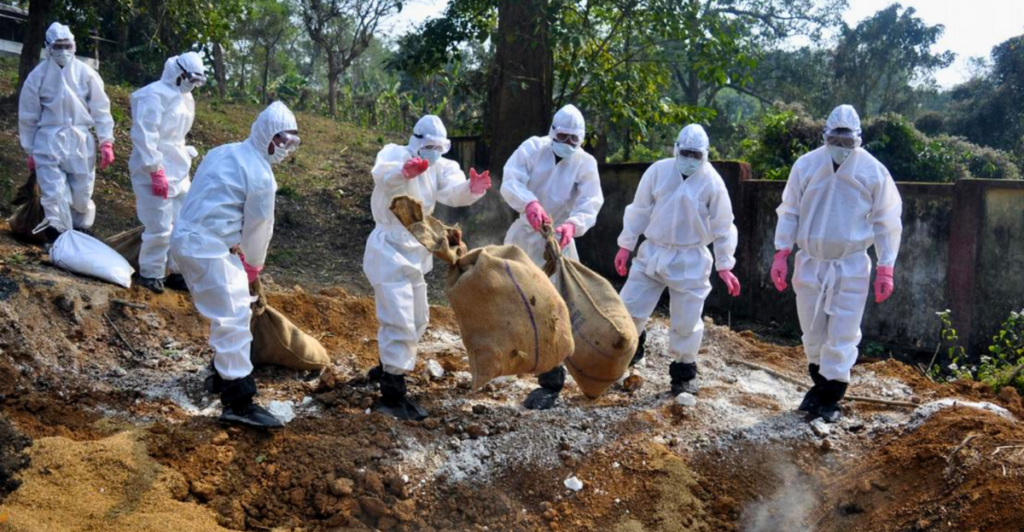
A disturbing surge in marine mammal and seabird deaths along Southern California’s coast has left experts scrambling to respond as it’s wreaking havoc on the region’s ecosystems. Hundreds of sea lions, dolphins, and birds have washed ashore dead or gravely ill, exhibiting seizures, disorientation, and comatose states. Rescue teams, overwhelmed by over 100 daily reports of stranded animals, face agonizing triage decisions to prioritize those with the highest survival chances.
Crisis on California’s Coastline

California’s coastline faces a dire environmental crisis as toxic algal blooms wreak havoc on marine ecosystems. The neurotoxin domoic acid produced by these blooms has led to the mass illness and death of sea mammals and birds, including sea lions, dolphins, and seabirds. These animals are washing ashore in alarming numbers, exhibiting seizures, erratic behavior, and comatose states.
Scientists link the increasing frequency of these events to climate change and nutrient runoff from wildfires, which exacerbate algal growth. This crisis threatens marine biodiversity and disrupts public safety and beachgoers’ experiences along Southern California’s iconic coastline.
A Neurotoxin from Algal Blooms

A neurotoxin at the heart of California’s coastal crisis, domoic acid, is produced during harmful algal blooms by diatoms in the genus Pseudo-nitzschia. This potent toxin accumulates in the marine food chain, affecting small fish like sardines and anchovies, which are consumed by larger predators such as sea lions and dolphins.
Domoic acid exerts its toxic effects by overstimulating glutamate receptors in the brain, leading to seizures, memory loss, and even death in severe cases. While acute exposure causes immediate neurological damage, repeated low-level exposure poses long-term risks to wildlife and human populations.
Symptoms of Domoic Acid Poisoning
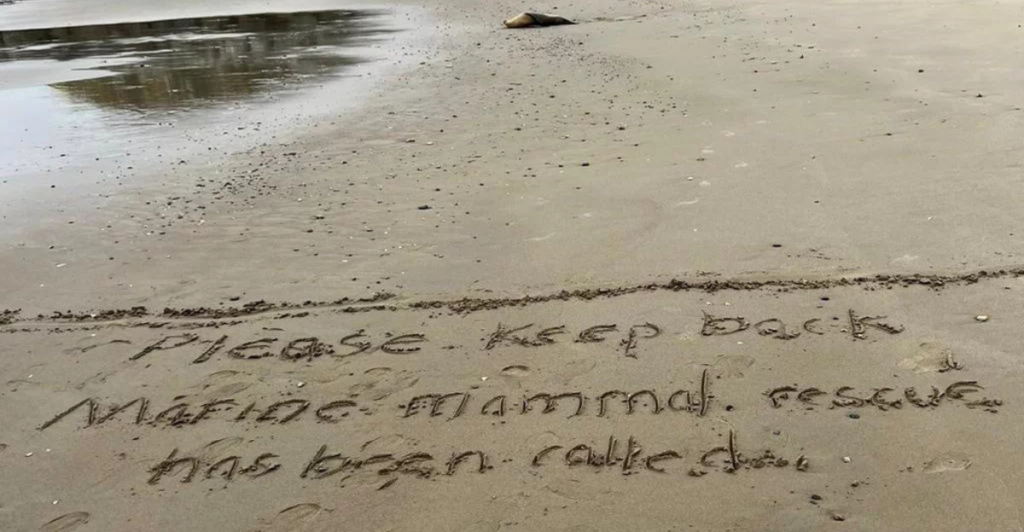
Domoic Acid Poisoning is also known as Amnesic Shellfish Poisoning (ASP) and can range from mild gastrointestinal distress to severe neurological damage. Acute symptoms include seizures, head weaving, foaming at the mouth, and abnormal behavior such as unresponsiveness to stimuli or unusual aggression.
Chronic effects may involve recurrent seizures, disorientation, and abnormal behavior patterns that persist long after the initial exposure. Birds affected by domoic acid may exhibit head bobbing, wing twitching, loss of balance, and seizures.
Record-Breaking Algal Bloom Emerges Early
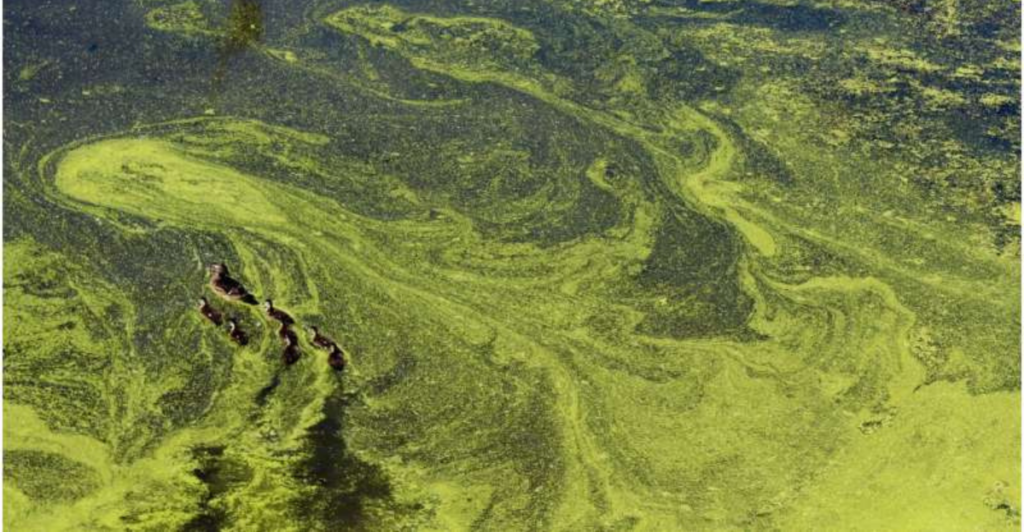
The emergence of a record-breaking algal bloom along the North Pacific, stretching from the Aleutian Islands to Southern California, has alarmed scientists with its unprecedented scale and early onset. “These relatively high concentrations are rare in B.C. coastal waters, and we have not yet seen a mortality event like the ones that have been reported in California during the past four years or so,” said Andrew Ross, a PhD research scientist at DFO Institute of Ocean Sciences in Sidney.
Fueled by well-above-average sea surface temperatures and nutrient runoff, the bloom began in May. It expanded rapidly, producing domoic acid levels in Monterey Bay 10-30 times higher than those documented over the past quarter-century. Satellite chlorophyll data revealed dense concentrations along the West Coast, disrupting fisheries from Alaska’s crab populations to California’s sardine and anchovy harvests.
Rescuers Forced to Prioritize Survivors

Rescue centers face agonizing triage decisions, prioritizing animals with the highest chance of survival amid limited resources. Overwhelmed by the influx of sea lions, dolphins, and seabirds exhibiting seizures and neurological damage, teams must focus on stabilizing acute cases. At the same time, chronic or severely debilitated animals often receive palliative care or humane euthanasia.
Experts emphasize that without urgent nutrient pollution controls and climate-driven mitigation strategies, such heart-wrenching scenarios will persist, straining ecosystems and the dedicated networks working to protect them.
Aggressive Sea Lion Behavior Alarms Swimmers
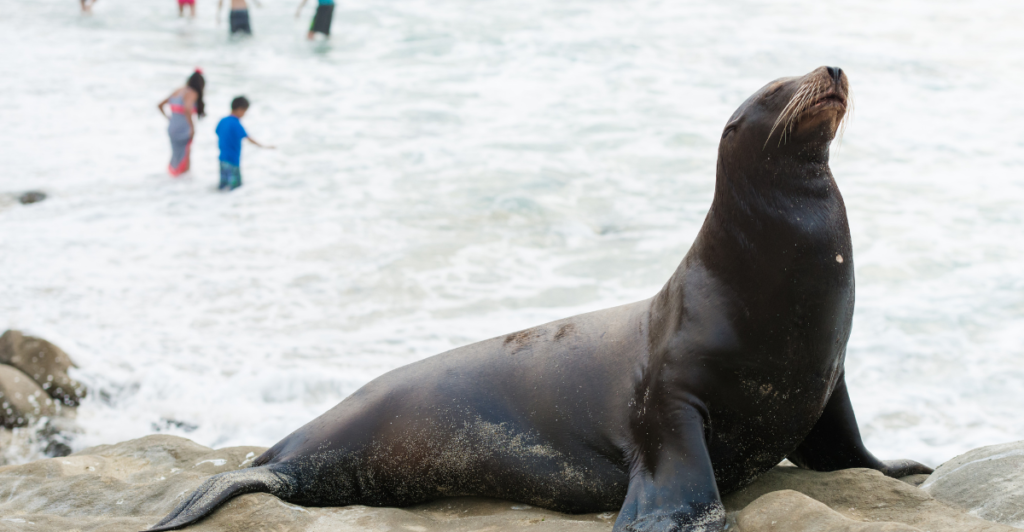
These coastal waters have become a hotspot for uncharacteristically aggressive sea lion encounters, with swimmers and surfers reporting attacks linked to domoic acid poisoning. Recent incidents include a surfer dragged off his board by a sea lion described as “feral, almost demonic” and a 15-year-old lifeguard candidate repeatedly bitten during a swim test.
The Marine Mammal Care Center in Los Angeles has admitted nearly 200 affected sea lions since late March, a nearly fourfold increase from 2024. Many exhibited head swaying, foaming at the mouth, and lethargy before collapsing into comatose states.
Rehabilitation Challenges and Heartbreaking Losses

Rehabilitating these animals can be challenging as rescue centers struggle with limited resources and the sheer scale of stranding events. Treating poisoned sea lions, dolphins, and seabirds requires intensive care, including hydration therapy, anti-seizure medications, and nutritional support. However, many animals arrive in advanced stages of toxicity, with irreversible brain damage or debilitating neurological symptoms that prevent their release back into the wild.
For dolphins and fur seals, their size and fragility often make rescue efforts even more difficult; stranded dolphins can suffer organ failure simply from being out of water too long. Tragically, euthanasia has become the only humane option for many animals whose suffering cannot be alleviated.
Wildfire Runoff Exacerbates the Crisis

The recent torrential downpours following the devastating January 2025 Southern California wildfires have exacerbated the ongoing coastal crisis by introducing a new wave of pollutants into the marine ecosystem. As heavy rains wash over the charred landscape, they carry a toxic cocktail of ash, debris, and chemicals into streams and rivers, ultimately flowing into the ocean.
This wildfire runoff contains high nutrients like nitrogen and phosphorus, which can trigger explosive algal growth, including harmful algal blooms. The influx of sediment and black ash not only smothers aquatic habitats but also robs the water of oxygen as it decomposes, potentially leading to fish kills and damaging the delicate gill structures of marine life.
Long-Term Ecological Consequences
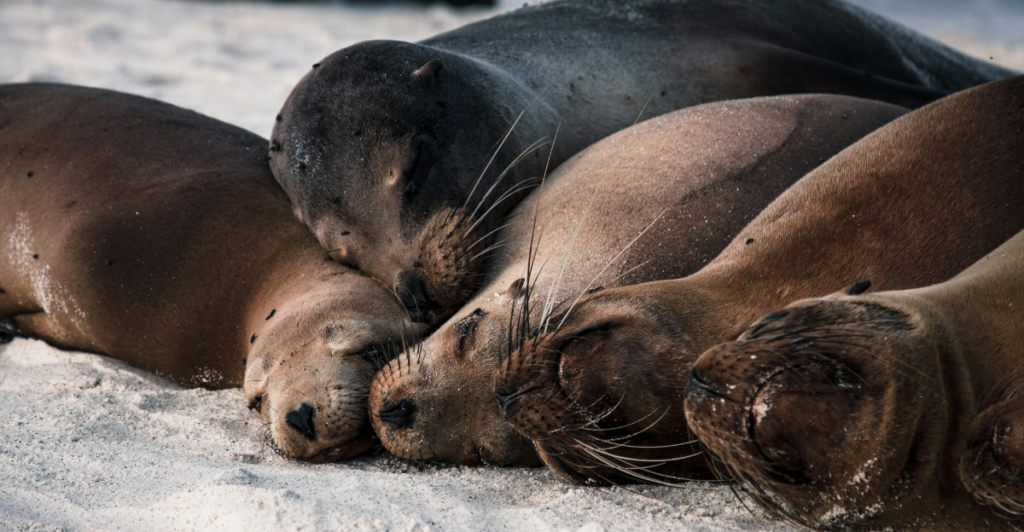
As these toxic events become more frequent and intense due to climate change and anthropogenic factors, they create a cascade of effects throughout the food web. “Toxins accumulate in tissues, causing lasting harm,” warns Melissa Anderson of the Southern California Ocean Observing System.
The accumulation of domoic acid in lower trophic levels, such as plankton and small fish, leads to bioaccumulation in larger predators, causing chronic neurological damage even in sublethal doses. This neurological impairment can affect the hunting, navigation, and reproductive behaviors of key species like sea lions, potentially leading to long-term population declines.
Explore more of our trending stories and hit Follow to keep them coming to your feed!

Don’t miss out on more stories like this! Hit the Follow button at the top of this article to stay updated with the latest news. Share your thoughts in the comments—we’d love to hear from you!







